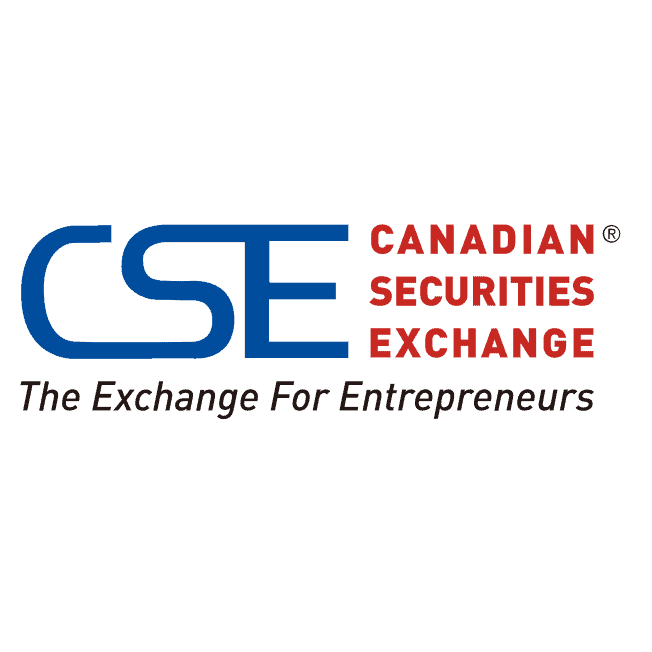Canadian Securities Exchange – CSE
- Home
- Canadian Securities Exchange – CSE
Canadian Securities Exchange – CSE

Overview
The Canadian Securities Exchange (CSE) is Canada’s modern and accessible stock exchange for entrepreneurs and growth-stage companies. Originally launched in 2001 as the Canadian Trading and Quotation System (CNQ), it was designed to simplify the path to public markets. In 2008, the exchange rebranded to the Canadian National Stock Exchange (CNSX), and in 2014, adopted its current name—the Canadian Securities Exchange.
The CSE is operated by CNSX Markets Inc. and is recognized by the Ontario Securities Commission and other provincial regulators across Canada. It combines a streamlined listings platform with a real-time trading environment that includes its Pure Trading facility—an alternative marketplace originally launched in 2007 and now fully integrated into the CSE’s operations.
The exchange focuses on low-cost access, streamlined disclosure, and a practical regulatory environment that empowers early-stage and innovative companies to access growth capital efficiently. Its structure is especially attractive to entrepreneurs in sectors like life sciences, technology, clean energy, digital assets, mining, and cannabis.
Venture vs. Non-Venture Designation
Unlike exchanges with rigid tiering systems, the CSE uses a two-tier disclosure classification:
- Venture Issuers: These are typically early-stage companies subject to less intensive continuous disclosure and governance rules under Canadian securities law. Most new listings fall into this category.
- Non-Venture Issuers: These are larger, more mature issuers, often with substantial revenue or assets, and are subject to enhanced reporting obligations (e.g., annual information forms, executive compensation disclosure, audit committees, etc.).
This distinction allows the CSE to tailor its compliance expectations to the size and sophistication of the issuer, while maintaining investor protection through appropriate disclosures.
Initial Listing Requirements
Unlike other Canadian exchanges, the CSE does not impose hard financial thresholds for listing (such as minimum revenue or asset levels). Instead, it takes a principles-based approach focused on transparency, structure, and investor safeguards. Key listing expectations include:
- A defined business plan and credible milestones
- Sufficient capital to meet 12 months of operating and G&A expenses
- A qualified management team with relevant operational or sector experience
- Minimum of 150 public shareholders, each holding at least one board lot
- Minimum of 1,000,000 freely tradeable shares at listing
- Total issued share capital of at least $200,000
Audited financial statements (typically for the prior two years) and proper corporate governance policies are also required to complete the listing process.
Listing Process
The CSE accommodates multiple listing routes to serve the varying needs of companies, including:
- Initial Public Offering (IPO): A traditional prospectus-based raise and listing
- Reverse Takeover (RTO): A private company becomes public by merging with a CSE-listed shell
- Direct Listing: Listing by prospectus or exempt filing without raising new capital
This flexibility makes the CSE an attractive platform for both Canadian and international companies looking to access public markets on efficient terms.
Cross-Listings & Uplistings
The CSE is also open to foreign companies already listed on exchanges such as the OTC Markets (U.S.), Frankfurt Stock Exchange (Germany), or ASX (Australia). These companies may apply for a CSE listing to gain access to Canadian investors and capital markets while maintaining their primary listing elsewhere.
Additionally, existing CSE-listed issuers may seek to “graduate” to a senior exchange like the TSX Venture Exchange (TSXV) or Toronto Stock Exchange (TSX) once they meet higher-tier financial, governance, and distribution standards. This path is common for high-growth issuers that outgrow the early-stage market and seek broader exposure or institutional capital access.
Listing Fees
- Application Fee: $5,000 (non-refundable, due on submission)
- Initial Listing Fee: $10,000 to $40,000 depending on company market capitalization at time of listing
- Annual Sustaining Fee: Ranges from $12,000 to $24,000 based on issuer’s market cap bracket
Additional review fees may apply in cases of delayed listings, changes of business, or supplemental filings. However, the CSE remains the most affordable full-service exchange in Canada in terms of both initial and ongoing costs.
Ongoing Requirements
Once listed, CSE issuers must comply with a number of ongoing disclosure and corporate governance obligations, including:
- Quarterly and annual financial statements (prepared under IFRS)
- Timely disclosure of material changes via press releases and filings
- Insider reporting and executive compensation transparency
- Annual certifications and updated corporate information
For Venture issuers, these requirements are lighter than on the TSX or TSXV but still ensure that investors receive timely and relevant information.
Summary
The Canadian Securities Exchange offers a flexible, disclosure-driven alternative to Canada’s senior markets. Its lower fees, adaptable standards, and multi-path access make it a preferred destination for emerging companies seeking capital without the constraints of traditional listings.
Whether you’re considering an IPO, RTO, or direct listing, the CSE provides a regulatory environment built for entrepreneurs and investors alike. To explore whether a CSE listing is right for your business, fill out the form on this page and a member of our team will reach out to assist.
